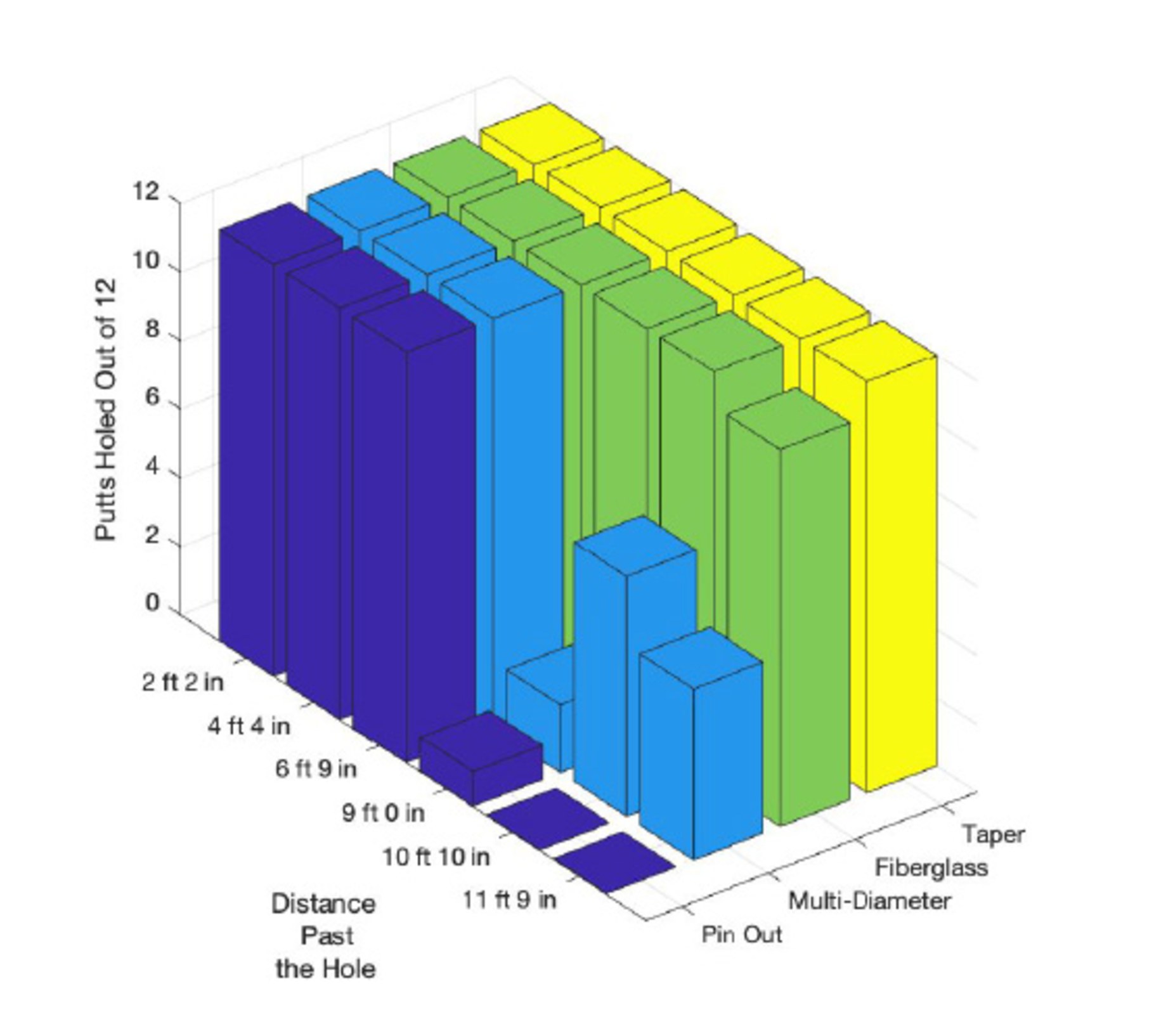The biggest and most talked-about rule change in 2019 among amateur and professional golfers alike was the decision to allow the flagstick to remain in the hole while players putted on the green.
While the rule was put into place in order to “generally speed up play” for those who don’t have caddies, pros and amateurs alike come to a general conclusion that leaving the flagstick in the hole is an advantageous way to putt, championed most notably by Bryson DeChambeau.
However, a physics professor from Cal Poly has debunked that line of thinking, saying that 99.9% of the time, it’s better to putt with the flagstick out of the hole.
GolfDigest.com’s Mike Stachura reported on the study commissioned by the magazine in which Tom Mase, professor of mechanical engineering and former associate chair of the department of mechanical engineering at California Polytechnic State University, bucked the conventional knowledge that the flagstick can act as a sort of “catch-all” for wayward putts.
Over six separate sessions, Prof. Mase used The Perfect Putter, a ramp-like training aid that provides as close to a repetitive roll as possible, from 2.5 feet from the cup, again in an effort to take out variables that could affect the tests such as imperfections in the green.
Mase tested six balls at a time at varying speeds to four separate hole conditions: flagstick in, flagstick out, on-center hit and off-center hit.
Tom Mase, a professor of mechanical engineering at California Polytechnic State University, explains why the flagstick should be pulled 99.9 percent of the time: https://t.co/mSjBUiJ64r pic.twitter.com/o3RvT37Gok
— Golf Digest (@GolfDigest) April 17, 2019
In determining the probability of a putt going in a certain portion of the hole, Prof. Mase introduced a bell curve, explaining that good putters make more putts in the center of the cup, but even that number of putts made dead center is low in comparison to all attempts — he calculated it to be 28% of putts that were center-cut.
With that in mind, there are 72% of putts that either catch a glancing blow of the flagstick or miss it altogether.
As we’ve seen with the other tests conducted previously, speed is the major factor is deciphering this riddle. With a putt that was going 2.5 feet past the hole, 100% of straight-on putts were holed regardless of whether or not the flagstick was in the hole. That remained true for putts that would end up to eight feet past the hole.
Here comes the math that Prof. Mase’s research is based upon…
We’re getting into the realm of some pretty bad putts at this point. Using the PGA Tour’s ShotLink data, along with the 28% center-cut probability, the likelihood of a Tour pro making a putt in the dead center from 25 feet is a little over 1%.
Now, take that 1% center make probability and couple that with a putt from that distance that goes more than eight feet past the hole, and we’re left with a minuscule percentage of putts.

Operating under those same parameters, 72% of putts that hit the hole aren’t going in center-cut. So, using a putt that would go 4.5 feet past the hole — which went in 100% of the time on a center make — Prof. Mase rolled 30 balls at holes with and without flagsticks in, while also testing the three most common types of flagsticks (fiberglass, tapered aluminum, dual-diameter aluminum).
In total, the make percentage of off-center putts with the flagstick out was overwhelmingly more successful. 81 of the 90 putts that didn’t have the flagstick in the hole dropped, which was 26 more made putts than the best-performing flagstick (fiberglass), which only made 55 of 90.
Therefore, the averages work out to be 90% makes for flagsticks out versus an average of 45% with flagsticks in.
Prof. Mase found that it was inconclusive if leaving the flagstick in was beneficial from a visual or distance perception standpoint, reporting that it was a subjective exercise that some found beneficial and others found distracting.
As always, golf is an individual game played against the course and par. We all want to shoot lower scores and play faster, so the question of whether or not you want to leave the flagstick in comes down to personal preference and weighing the benefit of playing quicker vs. the risk that you may have a putt miss that would have gone in were the flag out of the hole.
Either way, however, the science has spoken: on decent putts stuck with relatively good speed, ie. those that would be finishing within eight feet of the hole, the choice is clear: pull out the flagstick.



